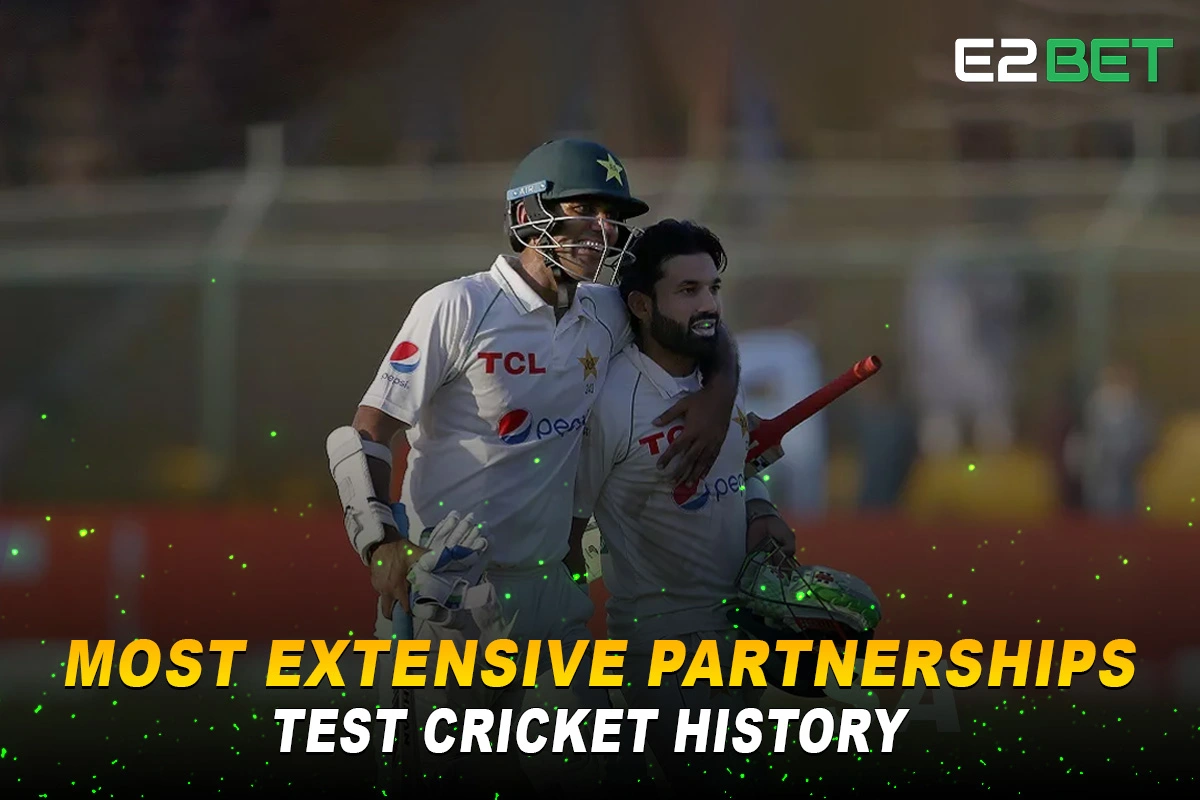In cricket, partnerships can be the cornerstone of a team’s success, especially in Test cricket, where endurance, patience, and skill are essential. While individual achievements are often celebrated, partnerships between two players can change the course of a match, creating historic moments that are remembered for decades.
Understanding Cricket Partnerships
In cricket, a partnership occurs when two players work together at the crease, accumulating runs while navigating the opposition’s bowling attack. Partnerships become even more crucial in Test cricket, where the game unfolds over five days, allowing for tactical plays and patient run-building.

Why Partnerships Matter in Test Cricket
A strong partnership adds to the scoreboard, bolsters team morale, exhausts the opposition, and can single-handedly determine the match’s momentum. Unlike shorter formats, Test cricket provides more time for players to build substantial partnerships, allowing them to impact the game significantly.
Historical Significance of Test Cricket Partnerships
Partnerships in Test cricket have played an integral role in many iconic matches. From record-breaking stands to gritty, match-saving efforts, partnerships often define the turning points in cricket history, becoming symbols of endurance and resilience.
Critical Factors for Successful Partnerships in Test Cricket
- Communication and Chemistry: Mutual understanding is crucial.
- Technical Skill: Batting technique against quality bowling.
- Mental Strength: Handling the pressure of long innings.
- Adaptability: Adjusting to changing conditions and opposition strategies.
The Ten Greatest Collaborations in Test Cricket History
Here are some of the most remarkable partnerships, defined by the runs they produced and their impact on cricket history:
Mahela Jayawardene and Kumar Sangakkara scored 624 runs in the 2006 Sri Lanka vs South Africa match.
Roshan Mahanama and Sanath Jayasuriya scored 576 runs in the 1997 Sri Lanka vs India match.
Martin Crowe and Andrew Jones combined for 467 runs in the 1991 New Zealand vs. Sri Lanka game.
Bill Ponsford and Donald Bradman: 451 runs (Australia vs England, 1934)
Mudassar Nazar and Javed Miandad combined for 451 runs in the 1983 India game vs. Pakistan.
Mudassar Nazar and Qasim Umar combined for 431 runs in the 1983 Pakistan vs India game.
In the 1956 India vs New Zealand match, Vinoo Mankad and Pankaj Roy scored 413 runs.
In the 2004 Sri Lanka vs Zimbabwe match, Marvan Atapattu and Kumar Sangakkara combined for 438 runs.
- Kusal Mendis and Angelo Mathews scored 399 runs.
- Notable Middle-Order Partnerships: Crowe and Jones with 467 runs.
- Remarkable Lower-Order Partnerships: Michael Clarke and Brad Haddin’s 373-run effort against England.
The Art of Building a Partnership in Test Cricket
Building a partnership in Test cricket requires patience and a clear understanding of one’s partner’s style. It’s about balancing the innings, rotating the strike, and playing to the team’s strengths while mentally outlasting the bowlers.
How Partnerships Affect Team Dynamics in Cricket
A solid partnership has a ripple effect on team morale. It boosts confidence, makes the opposition bowlers toil, and gives the rest of the lineup confidence to play their natural game.
Challenges Faced During Long Partnerships
Enduring a long partnership in Test cricket isn’t easy. Players face fatigue, mental exhaustion, and constant pressure from the opposition bowlers. Staying focused and committed for hours is challenging, making these partnerships remarkable.
Comparing Partnerships in Test Cricket to Other Formats
Unlike in ODIs or T20s, where quick runs are paramount, Test cricket partnerships focus on time and endurance. Test partnerships build over sessions, giving players more room to strategize and tackle bowlers over extended periods.
Future Prospects: Young Players and Promising Partnerships
With young talent emerging, we may see fresh partnerships setting new records. Players like Babar Azam and Abdullah Shafique from Pakistan or Marnus Labuschagne and Travis Head from Australia show potential for record-breaking alliances in the coming years.
Conclusion
Partnerships in Test cricket are the backbone of a team’s success. They test players’ skill, patience, and endurance, adding layers to the sport’s rich history. The partnerships listed above remind us of the timeless appeal of Test cricket and the magic that two players can create together.
FAQs
What is the highest partnership in Test cricket?
Mahela Jayawardene and Kumar Sangakkara scored 624 runs together during Sri Lanka’s 2006 match against South Africa, the highest partnership in Test cricket history.
Who holds the record for the most extended partnership in terms of time?
Sanath Jayasuriya and Roshan Mahanama batted for nearly 15 hours, amassing 576 runs in a single partnership against India in 1997.
Why are partnerships more significant in Test cricket?
Partnerships are crucial in Test cricket due to the format’s duration, allowing for strategic, patient gameplay that builds pressure on the opposition.
Can lower-order partnerships impact Test matches?
Yes, lower-order partnerships often add valuable runs, shifting momentum and sometimes deciding the outcome of close games.
How do partnerships influence cricket statistics?
Strong partnerships contribute to team totals and individual records, highlighting players’ consistency, skill, and synergy over time.